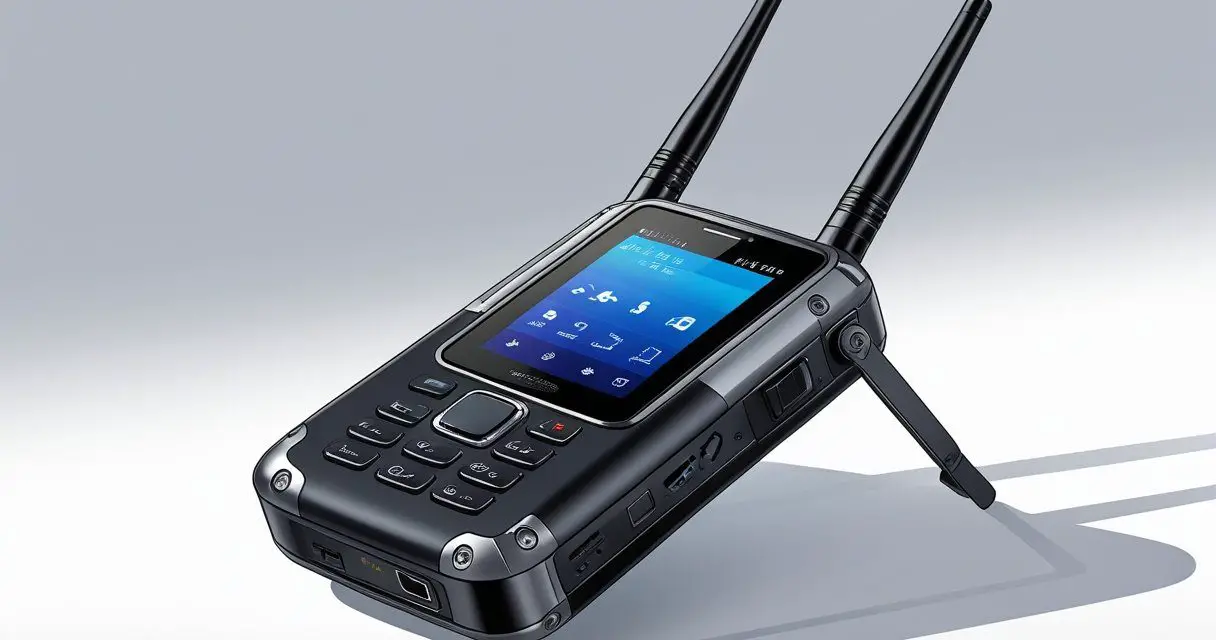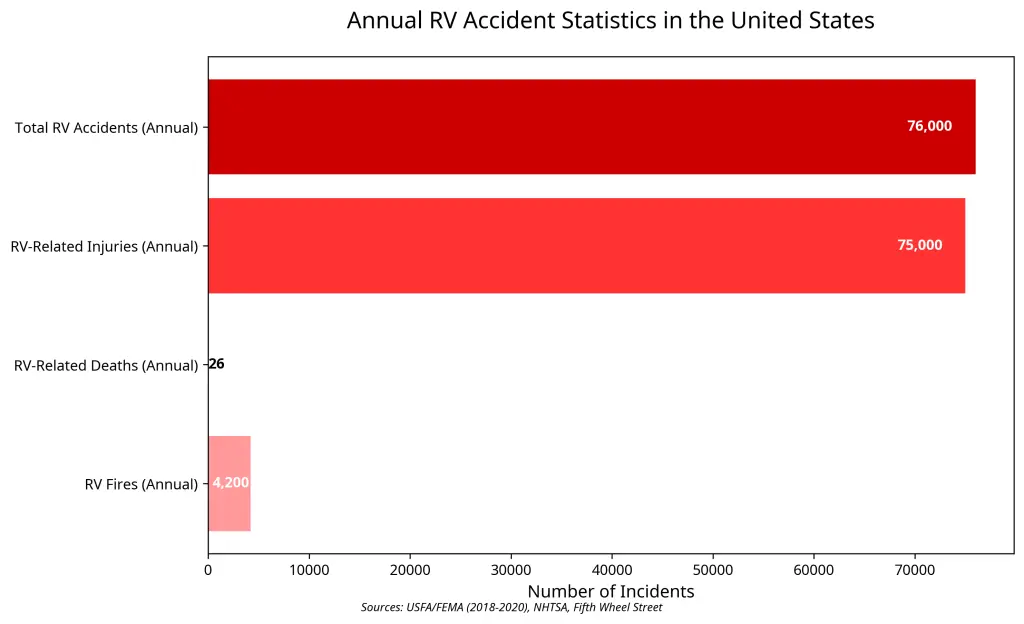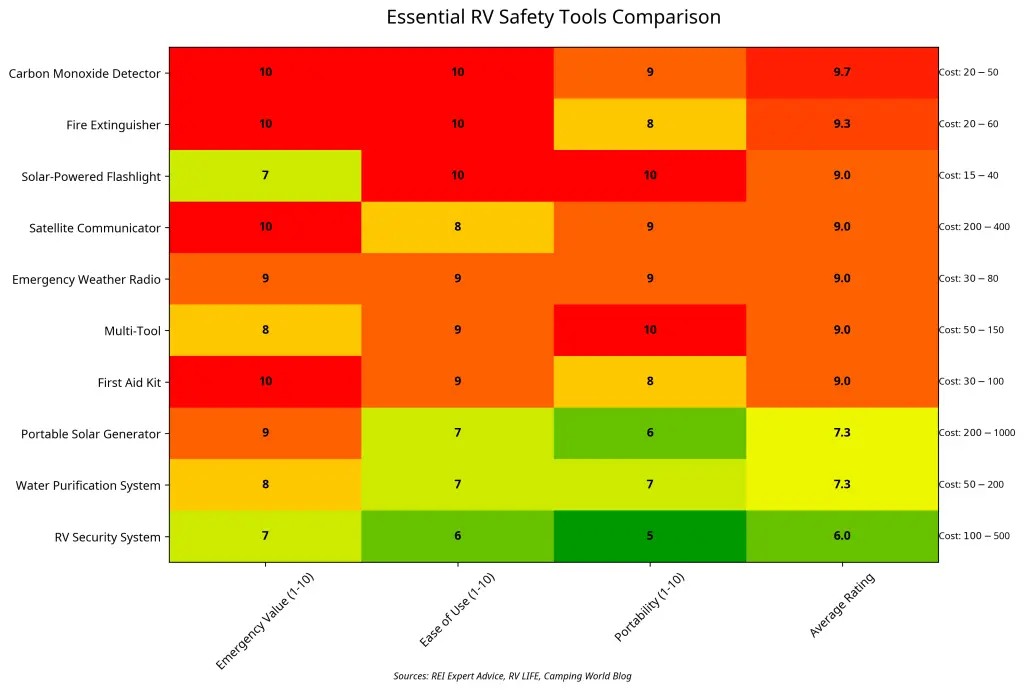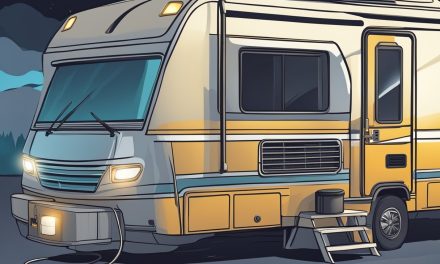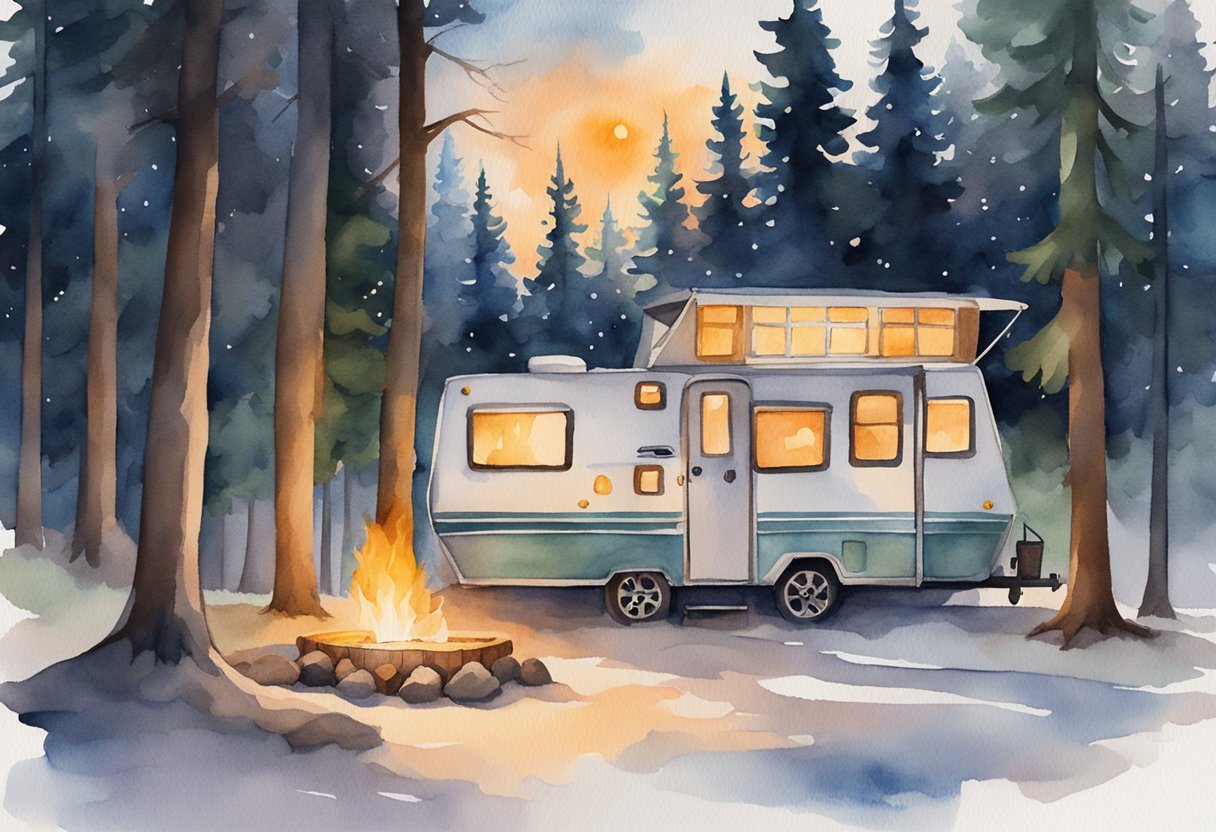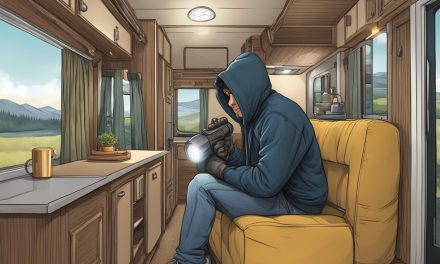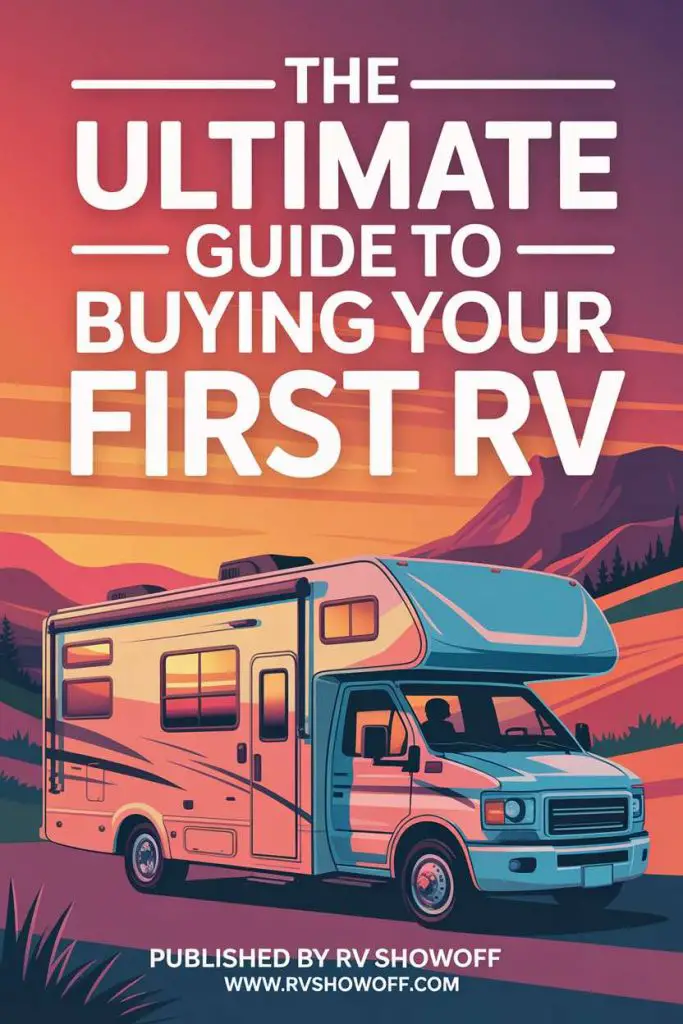Would you like to save this article?
The allure of the open road and the freedom of off-grid RV adventures have captured the hearts of millions of Americans, with over 11.2 million households owning an RV according to the RV Industry Association. What many weekend warriors and full-time nomads don’t realize is that venturing into remote locations comes with significant risks that proper preparation can mitigate.
Each year, approximately 76,000 RV accidents occur on American roads, resulting in thousands of injuries and dozens of fatalities that could have been prevented with the right safety equipment.
Expert RV enthusiast Jason Hanson emphasizes that having essential safety tools isn’t just about convenience—it’s about survival when you’re miles from civilization without cell service or immediate emergency assistance.
Whether you’re planning your first boondocking adventure or you’re a seasoned off-grid traveler, these ten critical tools could mean the difference between a minor inconvenience and a life-threatening disaster when you’re far from help.
1. Satellite Communicator: Your Lifeline When Cell Service Disappears
When you venture beyond the reach of cell towers, a satellite communicator becomes your most crucial connection to emergency services. These compact devices use global satellite networks to send SOS signals, text messages, and even your GPS coordinates to rescue services or loved ones from virtually anywhere on the planet. The Garmin inReach and SPOT X are popular options that offer two-way communication capabilities, weather forecasts, and emergency response coordination.
According to the Search and Rescue Operators of America, rescue operations initiated through satellite devices have a 50% faster response time compared to those reported by third parties who notice someone is missing. I always laugh thinking about how my spouse rolled their eyes when I insisted on buying our satellite communicator—until that time we got stuck in a flash flood area in Utah with no cell service for 30 miles in any direction. Suddenly I was the family hero instead of the paranoid prepper!
2. Portable Solar Generator: Power When You Need It Most
Off-grid adventures mean leaving the electrical hookups behind, but that doesn’t mean you should be without power for essential devices. A portable solar generator combines solar panels, battery storage, and power inverters to provide electricity anywhere the sun shines. Modern units like the Jackery Explorer or Goal Zero Yeti can power medical devices, communication tools, and emergency equipment for days without traditional power sources.
A 2024 survey by Kampgrounds of America found that 68% of RVers who boondock regularly consider a solar power solution their most valuable investment after their vehicle itself. The irony of spending thousands on an RV only to be defeated by a dead phone battery isn’t lost on me—nothing says “roughing it” quite like frantically trying to start your car to charge your devices because you forgot to invest in solar. Trust me, your future self will thank you when you’re comfortably watching weather alerts while your unprepared neighbors are sitting in the dark!
3. Carbon Monoxide Detector: The Silent Lifesaver
Carbon monoxide (CO) is often called the “silent killer” because this odorless, colorless gas can be fatal before you even realize it’s present. RVs are particularly vulnerable to CO poisoning due to their confined spaces and multiple fuel-burning appliances. According to FEMA, carbon monoxide poisoning is responsible for approximately 15 deaths annually in RV-related incidents, with many more requiring hospitalization.
Modern CO detectors are inexpensive (typically $20-$50) and can be easily installed in any RV. Look for models specifically designed for RVs that can handle temperature fluctuations and have battery backup for when you’re off-grid. I find it hilarious that we’ll spend hours researching the perfect camping chair or the most Instagram-worthy outdoor lights, but somehow forget the $30 device that could literally save our lives while we sleep. Nothing ruins a vacation quite like, you know, not waking up!
4. Multi-Tool: The Swiss Army Solution to Countless Problems
Never underestimate the value of a quality multi-tool when you’re miles from the nearest hardware store. These compact devices combine pliers, knives, screwdrivers, wire cutters, and numerous other tools in one portable package. The Leatherman Signal was specifically designed with outdoor adventures in mind, including emergency whistles and fire-starting capabilities.
A survey of full-time RVers by Escapees RV Club found that 92% consider a multi-tool essential for off-grid travel, with 78% reporting they use it at least once during every trip. I once watched my neighbor spend two hours trying to fix a loose connection with his car keys while I smugly pulled out my multi-tool and fixed the same issue on my rig in about 45 seconds. The look on his face was worth twice what I paid for that tool—though I did eventually take pity and help him out!
5. Emergency Weather Radio: Stay Informed When Storms Strike
Weather conditions can change rapidly in remote areas, and without access to television or internet, an emergency weather radio becomes essential. These specialized radios receive NOAA Weather Radio broadcasts, providing critical alerts about severe weather, natural disasters, and other emergencies. Models like the Midland ER310 offer multiple power sources including hand-cranking, solar panels, and batteries to ensure you’re never without information.
The National Weather Service reports that 90% of all presidentially declared disasters are weather-related, affecting millions of Americans annually. Having advance warning can provide crucial time to secure your RV or evacuate if necessary. My personal favorite memory was watching fellow campers frantically pack up when they heard about an approaching storm from me—all because they laughed earlier when I was setting up my “dorky” weather radio. Who’s dorky now when you’re not scrambling to collect your soaking wet camping chairs from across the campground?
6. Comprehensive First Aid Kit: Be Your Own First Responder
When you’re hours away from medical facilities, a well-stocked first aid kit becomes your frontline defense against injuries and medical emergencies. Beyond basic bandages and antiseptics, off-grid travelers should include items like emergency blankets, tourniquets, splints, and prescription medications.
A study by the Outdoor Industry Association found that 47% of outdoor recreationists have experienced injuries requiring first aid while in remote locations, yet only 23% carried adequate supplies to address these injuries. I always get a good chuckle when people pack six different types of sunscreen but forget basic first aid supplies. Sure, you won’t get sunburned during your trip, but good luck handling that nasty cut with your SPF 50!
7. Water Purification System: Don’t Let Contaminated Water Ruin Your Trip
Access to clean drinking water is non-negotiable, even when you’re miles from the nearest tap. Water purification systems range from simple filtration straws to comprehensive pump systems that can process gallons of water from natural sources. Products like the LifeStraw or Berkey systems can remove bacteria, parasites, and many contaminants from questionable water sources.
The CDC reports that waterborne illnesses affect approximately 7.2 million Americans annually, with outdoor recreationists at higher risk. A quality water purification system can be the difference between continuing your adventure and spending days confined to your RV bathroom. I always find it amusing when fellow RVers pack cases of bottled water that take up half their storage space, when a compact water filter could have saved them room for, I don’t know, actual fun stuff! Nothing says “I didn’t think this through” quite like running out of drinking water on day two of a seven-day trip!
8. Fire Extinguisher: Your First Line of Defense Against Disaster
RV fires spread incredibly quickly due to the confined space and abundance of flammable materials. According to the U.S. Fire Administration, approximately 4,200 RV fires occur annually in the United States, resulting in millions in property damage and, tragically, loss of life. A properly rated fire extinguisher—ideally a 2-A:10-B:C model—should be mounted near the exit of your RV, with additional units near sleeping areas and the kitchen.
Experts recommend checking your extinguisher monthly and replacing it according to the manufacturer’s guidelines, typically every 5-12 years. I always laugh when I see elaborate RV kitchens with every gadget imaginable but no visible fire extinguisher. Sure, that $500 espresso machine is great until it shorts out and turns your $80,000 rig into the world’s most expensive campfire!
9. Emergency Flares and Reflectors: Be Seen When You Need Help
If your RV breaks down in a remote location, being visible to potential help—or preventing additional accidents—becomes critical. Emergency flares, LED beacons, and reflective triangles make your vehicle visible from significant distances, even in poor weather conditions.
The National Highway Traffic Safety Administration recommends placing reflective triangles at 10, 100, and 200 feet behind your vehicle when stopped on the roadside. Modern LED flares offer advantages over traditional pyrotechnic flares, including longer operation times and no fire risk. I find it hilariously ironic how many RVers spend thousands on fancy exterior LED lighting to look cool at the campground but forget the basic emergency reflectors that could actually save their lives on a dark roadside. Priorities, people!
10. Portable Jump Starter: Don’t Let a Dead Battery End Your Adventure
Few things are more disheartening than discovering a dead battery when you’re miles from the nearest service station. Modern portable jump starters are compact enough to store in a glove compartment yet powerful enough to start most RV engines multiple times on a single charge. Many units also include USB ports for charging devices, built-in flashlights, and even air compressors for tire inflation.
A survey by Good Sam Club found that battery issues are among the top three reasons for roadside assistance calls among RVers, with remote locations often resulting in wait times exceeding four hours. I always get a good laugh remembering the time I watched a family wait half a day for roadside assistance in a national park, while I was able to help another stranded camper get back on the road in minutes with my jump starter. The look of pure joy on their faces was priceless—almost as priceless as the six hours of vacation time they didn’t waste sitting on the side of the road!
Conclusion
The freedom of off-grid RV adventures comes with responsibility—being prepared for emergencies when help isn’t just a quick phone call away. The statistics don’t lie: RV accidents, fires, and medical emergencies happen with alarming frequency, but having the right tools can dramatically improve outcomes when things go wrong. As Jason Hanson emphasizes in his videos, these aren’t just convenience items—they’re potential lifesavers.
Whether you’re a weekend warrior or a full-time nomad, investing in these ten essential safety tools should be considered as important as any other aspect of your RV purchase and preparation. After all, the best adventures are not just the most exciting ones, but the ones you return home safely from to plan your next journey.
References
- RV Industry Association. (2024). “RV Ownership Statistics.” Retrieved from https://www.rvia.org/
- U.S. Fire Administration. (2023). “Recreational Vehicle Fire Safety.” Retrieved from https://www.usfa.fema.gov/prevention/vehicle-fires/recreational-vehicles/
- National Highway Traffic Safety Administration. (2024). “RV Safety Statistics.” Retrieved from https://www.nhtsa.gov/
- Fifth Wheel Street. (2023). “RV Accidents and Statistics.” Retrieved from https://fifthwheelst.com/rv-accidents-statistics.html
- Kampgrounds of America. (2024). “North American Camping Report.” Retrieved from https://koa.com/north-american-camping-report/
- Outdoor Industry Association. (2023). “Outdoor Recreation Participation Report.” Retrieved from https://outdoorindustry.org/
- Centers for Disease Control and Prevention. (2024). “Waterborne Disease Prevention.” Retrieved from https://www.cdc.gov/
- Good Sam Club. (2024). “RV Roadside Assistance Statistics.” Retrieved from https://www.goodsam.com/
- REI Co-op. (2024). “Camping Essentials Checklist.” Retrieved from https://www.rei.com/learn/expert-advice/family-camping-checklist.html
- Camping World. (2025). “Emergency Essentials for RV Owners.” Retrieved from https://blog.campingworld.com/gear-and-accessories/5-essential-emergency-items-for-every-rv-owner/

